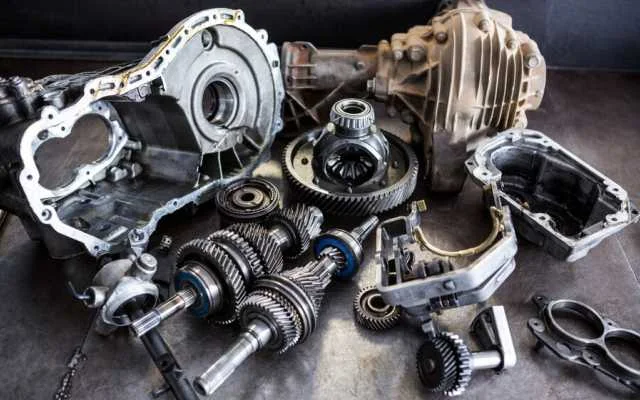What is the Central Differential?
At its core, the central differential serves as the nexus of power distribution in a vehicle equipped with all-wheel drive (AWD) or four-wheel drive (4WD) systems. Unlike the conventional differential found in rear-wheel-drive cars, the central differential distributes power not only between the front and rear axles but also between the left and right wheels.
Functionality of the Central Differential
The primary function of the central differential lies in its ability to distribute torque efficiently, ensuring optimal traction across all wheels. This distribution becomes crucial, especially when driving conditions vary, and each wheel requires a different amount of power to maintain stability and control.
Types of Differentials
1.
This type of differential lock allows for the equal distribution of power between the front and rear axles, ensuring balanced traction regardless of the terrain. By locking the center differential, torque distribution becomes fixed, enhancing stability in challenging conditions such as off-road driving or slippery surfaces.
2.
The interwheel differential lock, also known as the axle differential lock, focuses on distributing power between the left and right wheels on the same axle. By regulating wheel spin individually, this differential type ensures that each wheel receives the necessary torque, preventing slippage and maintaining control during cornering or uneven terrain.
Inter-Axle Differential Lock (Center Differential Lock)
This type of differential lock allows for the equal distribution of power between the front and rear axles, ensuring balanced traction regardless of the terrain. By locking the center differential, torque distribution becomes fixed, enhancing stability in challenging conditions such as off-road driving or slippery surfaces.
2.
Interwheel Differential Lock (Axle Differential Lock)
The interwheel differential lock, also known as the axle differential lock, focuses on distributing power between the left and right wheels on the same axle. By regulating wheel spin individually, this differential type ensures that each wheel receives the necessary torque, preventing slippage and maintaining control during cornering or uneven terrain.
How Does the Differential Work?
The central differential operates on the principle of allowing wheels to rotate at different speeds while maintaining a constant output shaft speed from the transmission. This function is essential, especially during turns, where the outer wheel travels a greater distance than the inner wheel.
Components and Their Functions
1. Oil Seal
The oil seal prevents lubricant leakage from the central differential, preserving its internal components and ensuring smooth operation over extended periods.
2. Bearing
Bearings within the central differential facilitate smooth rotation of the differential carrier, reducing friction and wear on critical components.
3. Differential Carrier
The central piece of the differential assembly, the differential carrier houses the gears and shafts responsible for distributing torque to the wheels, ensuring optimal traction and stability.
4. Other Components
Additional components such as gears, pinions, and clutch packs work in harmony to regulate torque distribution, adapting to changing driving conditions and ensuring optimal performance.
The oil seal prevents lubricant leakage from the central differential, preserving its internal components and ensuring smooth operation over extended periods.
2. Bearing
Bearings within the central differential facilitate smooth rotation of the differential carrier, reducing friction and wear on critical components.
3. Differential Carrier
The central piece of the differential assembly, the differential carrier houses the gears and shafts responsible for distributing torque to the wheels, ensuring optimal traction and stability.
4. Other Components
Additional components such as gears, pinions, and clutch packs work in harmony to regulate torque distribution, adapting to changing driving conditions and ensuring optimal performance.
Characteristics of a Damaged Central Differential
Identifying signs of central differential damage is crucial for maintaining vehicle safety and performance. Common indicators include unusual noises during operation, vibrations, or difficulty engaging the differential lock mechanisms. Prompt inspection and repair are essential to prevent further damage and ensure continued reliability on the road.
In conclusion, the central differential stands as a vital component in the realm of automotive engineering, orchestrating power distribution with precision and efficiency. Understanding its function, types, and inner workings empowers drivers to navigate diverse terrain with confidence, ensuring a smooth and safe journey on the road.

